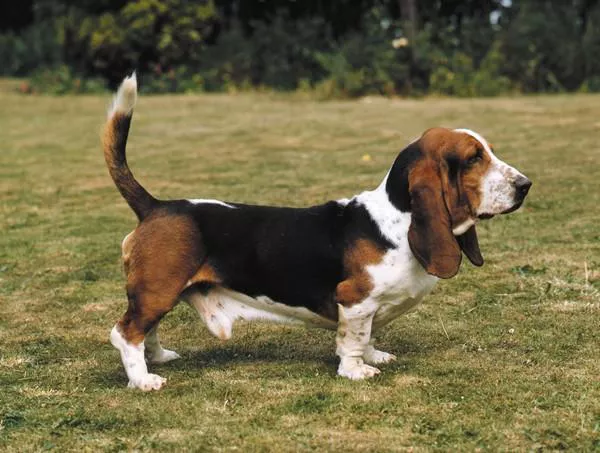Introduction
The world of dog breeds is as diverse as it is fascinating, with each breed possessing a unique set of characteristics and purpose. Among these remarkable breeds is the Basset Hound, known for its droopy ears, mournful eyes, and distinct scenting abilities. But what exactly were Basset Hounds bred for? In this article, we will delve into the origins of this beloved breed, explore their historical purpose, and shed light on the qualities that make them such exceptional companions today.
1. The Origins of Basset Hounds
The Basset Hound’s ancestry can be traced back to ancient scent hounds in Europe, particularly France and Belgium. It is believed that the breed’s lineage includes St. Hubert Hounds, which were selectively bred by monks at the Saint-Hubert Monastery for their keen sense of smell and hunting prowess. Over time, these scent hounds were crossed with Bloodhounds, introducing their distinct physical features and scenting abilities into the Basset Hound’s genetic makeup.
2. A Nose to Follow
Basset Hounds are renowned for their exceptional sense of smell, often described as second only to the Bloodhound. Their long, droopy ears and wrinkled skin contribute to their scenting abilities by trapping and channeling scents toward their highly developed olfactory system. This unique anatomical configuration allows them to detect and track scents with remarkable precision and tenacity.
3. Hunting Origins
The primary purpose for which Basset Hounds were originally bred was hunting, specifically in pursuit of small game such as rabbits and hares. Their keen sense of smell, combined with their short stature and sturdy build, made them well-suited for trailing scents close to the ground and navigating dense underbrush. Basset Hounds were prized for their ability to maintain a slow, steady pace during the hunt, allowing hunters to keep up with them on foot.
4. The Art of Scenting
Basset Hounds possess an innate talent for trailing scents and have a distinct hunting style known as “scenting.” Unlike some other hunting breeds that rely on speed and agility, Basset Hounds rely heavily on their scenting abilities and are known for their deliberate and methodical approach to tracking game. Their ability to stay focused on a scent trail for extended periods, regardless of distractions, showcases their determination and dedication to their hunting tasks.
5. The Influence of French and Belgian Breeders
Throughout history, French and Belgian breeders played a significant role in refining and standardizing the Basset Hound breed. They aimed to create a dog that could excel in the hunt while also possessing a friendly and amiable disposition. These breeders selectively bred Basset Hounds with desired traits, focusing on maintaining their scenting abilities, distinctive appearance, and amiable temperament.
6. Recognition as a Distinct Breed
The Basset Hound’s distinct characteristics and hunting prowess led to its recognition as a distinct breed in the late 19th century. The Basset Hound Club of France was formed in 1898, followed by the Basset Hound Club of America in 1935. These organizations played vital roles in establishing breed standards, promoting responsible breeding practices, and preserving the breed’s unique qualities.
7. Transition to Companion Dogs
As hunting methods evolved and the popularity of hunting with hounds declined, Basset Hounds found a new role as beloved companion dogs. Their friendly nature, gentle temperament, and distinct appearance endeared them to families and individuals seeking a loyal and affectionate pet. Basset Hounds’ adaptability to various living environments, including apartments, further contributed to their transition from the hunting field to the living room.
8. Contemporary Role and Popularity
In the present day, Basset Hounds continue to thrive as companions and beloved family pets. Their endearing physical attributes, laid-back demeanor, and affectionate nature make them popular choices for families of all sizes. Additionally, their social and patient temperament makes them suitable for households with children and other pets, further enhancing their popularity.
9. Activities for Basset Hounds
While Basset Hounds may not be as actively employed in hunting as they once were, their innate scenting abilities can still be nurtured and enjoyed through various activities. Scent work and tracking trials allow Basset Hounds to engage their natural instincts and provide mental stimulation. Additionally, activities such as obedience training, agility, and participation in dog shows can provide Basset Hounds with opportunities for exercise, socialization, and mental engagement.
Conclusion
The Basset Hound’s origins as a scent hound bred for hunting rabbits and hares highlight their exceptional scenting abilities and enduring legacy. While their hunting days may be largely behind them, Basset Hounds have seamlessly transitioned into the role of beloved companion dogs, providing warmth, loyalty, and companionship to countless households worldwide. As we celebrate the unique qualities and heritage of the Basset Hound, it is clear that their purpose extends beyond the hunt, bringing joy and enrichment to the lives of those fortunate enough to call them family.


